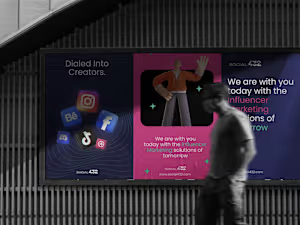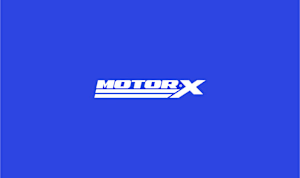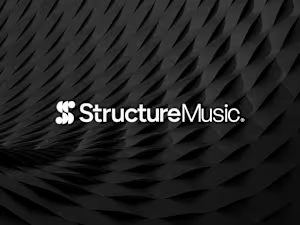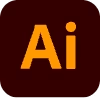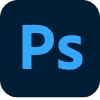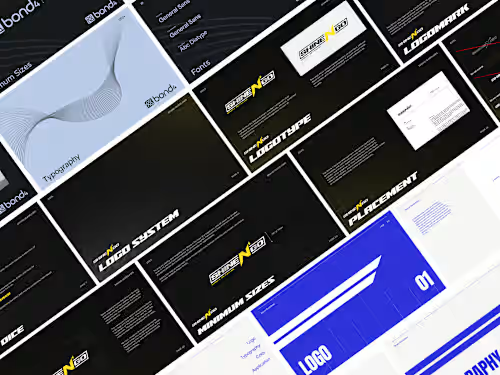
Full Branding + Guidelines
Contact for pricing
About this service
Summary
FAQs
How will a logo system and style guide actually help my business grow?
Consistency builds trust. When your branding looks professional across your website, social media, packaging, and ads, customers are more likely to take you seriously, remember you, and choose you over competitors.
Will this make me stand out from my competitors?
Yes — part of the process is researching your industry so your logo and visuals feel unique, memorable, and aligned with what your audience is drawn to.
Can this help me attract better clients or investors?
Yes — professional branding signals stability and credibility. Investors, partners, and high-value clients are more likely to trust a business that looks polished and intentional.
What kind of ROI can I expect?
While results vary, most clients see an increase in brand recognition, smoother marketing workflows, and improved customer trust. In simple terms: it makes selling your product or service easier.
What's included
Logo System
1. Primary Logo The main logo design (full-color, detailed version). Used in most brand applications. 2. Secondary / Alternative Logos Horizontal version (wider format for website headers, signage, etc.). Stacked/vertical version (for square spaces like profile images, packaging). Simplified version (for small-scale use, when details won’t reproduce well). 3. Logo Marks / Icons Standalone brand mark/symbol (without text). Monogram or lettermark (if applicable). Useful for favicons, app icons, avatars, or minimal brand presence.
Style Guide
1. Introduction Brand story / positioning: What the brand stands for, mission, values. Voice & tone overview: Short notes on how the brand speaks (professional, playful, approachable, etc.). 2. Logo Guidelines Primary logo + all variations (with correct/incorrect usage examples). Clear space and minimum size requirements. Color versions (full, mono, reversed). Background rules (what’s allowed / not allowed). 3. Color System Primary palette (core brand colors). Secondary / accent colors. Neutral colors (grays, black, white). Usage ratios (e.g., 70% primary, 20% secondary, 10% accent). Technical breakdowns: CMYK (print) RGB (screen) HEX (web) Pantone (spot printing) 4. Typography Primary typeface (headlines). Secondary typeface (body text). Optional tertiary (accents or captions). Web-safe alternatives (e.g., Google Fonts fallback). Hierarchy examples (headline → subhead → body → caption). Do’s and don’ts (e.g., no stretched fonts, all caps only in headings). 5. Imagery & Photography Style guidelines (e.g., candid, minimal, high-contrast, warm tones). Subject matter (people, products, lifestyle, abstract). Do’s and don’ts (stock-photo clichés, over-editing). Photo treatments (filters, color grading, overlays). 6. Iconography & Graphics Custom icon set (line style, fill style, rounded vs sharp). Usage rules (sizing, stroke weight, color fill). Patterns, shapes, or graphic elements unique to the brand. 7. Layout & Composition Grid system (columns, margins, spacing rules). Standard page layouts (poster, social media, business card). White space usage. Alignment and proportion rules. 8. Applications & Mockups Examples of the brand in use: Stationery (business cards, letterhead, envelopes). Social media templates. Website or app screens. Merch or packaging. Consistency examples across platforms. 9. Tone of Voice & Copywriting Messaging pillars (e.g., “friendly, innovative, trustworthy”). Example headlines, taglines, and calls-to-action. Do’s and don’ts (words to avoid, brand-specific phrasing). 10. File Assets Links to the actual logo files, color palettes, typeface downloads. Templates (social posts, presentations, letterhead, email signatures). Favicon / icon exports.
Business Card
1. Design Variations Front + back design (main layout). Multiple roles/people (if client needs cards for more than one employee). Alternative orientations (horizontal vs vertical — if relevant). 2. File Formats for Print Editable / Source file: .AI (Adobe Illustrator, preferred). .PSD or .INDD (if used). Print-ready files: .PDF (with crop marks, bleeds, CMYK). .EPS (sometimes requested by printers). Preview files: .JPG or .PNG (RGB, for client approval or digital reference). 3. Specs & Technicals Size / dimensions (usually 3.5" × 2" in North America, but varies by region). Bleed setup (typically 0.125" / 3mm). Safe zone / margins (to avoid cutting off text/logos). Color mode: CMYK for print, RGB for preview. Resolution: 300 DPI (print standard). 4. Brand Integration Logo placement (primary or secondary logo). Brand colors applied correctly. Typography aligned with brand style guide. Optional graphic elements (icons, background patterns, spot colors, embossing). 5. Printing Guidance Notes on paper stock (e.g., matte, glossy, textured, recycled). Finishes (spot UV, foil stamp, emboss/deboss, edge painting). Special cuts (rounded corners, square cards, custom die-cuts). Recommendations for bulk printing services (if client doesn’t have a printer). 6. Export Variations With bleed (for printer). Without bleed (for digital reference). Single card PDF + multi-up sheet (8–10 cards per sheet, if client prints in-house).
Example projects

